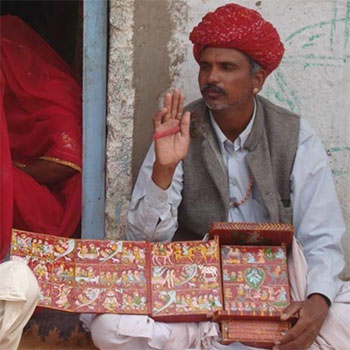Thesis
Batch 2010
(3 items)
ThesisBatch 2010
(3 items)
(3 items)
by Nina M Sabnani; supervisor/s: Prof. Ravi Poovaiah & Prof. Jawaharlal Handoo
by D. Udaya Kumar; supervisor/s: Prof. G. V. Sreekumar & Prof. Uday A. Athavankar
Tamil belongs to the Dravidian languages of southern India. It is one of the classical languages of the world, with a literary history spanning more than two millennia. The earliest Tamil literature dates to the Ca?kam period (300 BC–200 AD). Traditionally, Tamil was written on palm leaves, one of the oldest forms of writing in ancient India. The precise origin and history of palm leaf writing are unknown, but the practise is believed to have existed since the Ca?kam period. The use of palm leaf as a medium continued for several centuries until the late twentieth century. A medium with such a long history has scant literature on its writing system and its impact on script evolution. The existing literature on the evolution of script only focuses on stone and metal inscriptions. Other traditional mediums, such as palm leaf manuscripts, have not been explored and researched.
Traditional palm leaf manuscript writing was gradually displaced by the introduction of print media in the late sixteenth century. A printing press sent to Abyssinia for missionary work accidentally landed in India in 1556. Soon after, Christian evangelists adapted the printing press for native conversion. Initiatives by the missionaries led to the spread and establishment of printing. In the later centuries, the press gradually became one of the most important modes of communication, eventually supplanting handwritten manuscripts. On the other hand, it changed in relation to the medium. The shift from handwritten palm leaves to printing led to the transformation of letterforms. And also, there has been an influence of the letterpress medium and western typography on the native script, which needs to be researched. This early transformation is critical for typographers and type designers to understand the script and its evolution from handwritten forms to the standardised letters seen today. The understanding will also bridge the knowledge gap between the evolutionary findings of archaeologists, epigraphists, and historians.
The aim of the research was to determine the influence of the palm leaf medium and its writing system on the evolution of script. Concurrently, it aims to understand the transformation of Tamil letterforms from handwritten palm leaf manuscripts to early letterpress typefaces. The research also seeks to determine the impact of letterpress media and western typography on Tamil script. At present, there is very little literature and research material available on typography and type design in vernacular languages, especially Tamil. Therefore, the body of research would aim at creating a primary resource and knowledge base for the history of Tamil type design.
by Girish Dalvi; supervisor/s:
Printing was introduced to the Indian subcontinent in the late sixteenth century. Ever since this time, the designing of Devanagari typefaces has largely been an intuitive activity, more often than not due to the fact that there exists no single, unanimously accepted body of work that formalises the structure and display of Devanagari typefaces. This leads to the conclusion that the domain knowledge of Devanagari typography is complex, ambiguous, and non-standardized—hence inadequately interpreted. One can perceive a need here for an academically validated theoretical model that describes the various aspects of Devanagari typefaces and presents a more informed view of Devanagari typography. Current type designers of Devanagari do follow certain tacit models while designing fonts, but none of these have been well documented, nor have they been subjected to academic consolidation or validation. There also have been attempts by designers and theorists to pen down some of their views on Devanagari lettering, calligraphy, and type design; most of this work, however, is based on antiquated technologies, and no authors have commented on contemporary typefaces and technologies.
An area that has been directly affected by the lack of a formal description is the classification of typefaces. Through our research, we found the current classification systems for Devanagari to be inefficient. In order to understand how experts and nonexperts view Devanagari typefaces, we captured and analysed the classification strategies used by experts and nonexperts. Rigid classification systems, when used in isolation or based upon a single parameter, fail in the identification and integration of multiple points of view.
This research attempts to solve these problems by creating an explicit, formal ‘conceptual model’ that captures concepts and their relationships within this domain and theoretically represents this domain exhaustively. This model was also used in the creation of a faceted classification system for Devanagari typefaces. Through our research, we suggest that a web-based faceted classification tool developed (implemented using HTML,Flex, PHP, and MYSQL) based on the conceptual model allows for more accurate searching (in identity matching tasks) and better short listing (browsing) Devanagari fonts for general purpose use by experts as well as minimally informed users.


